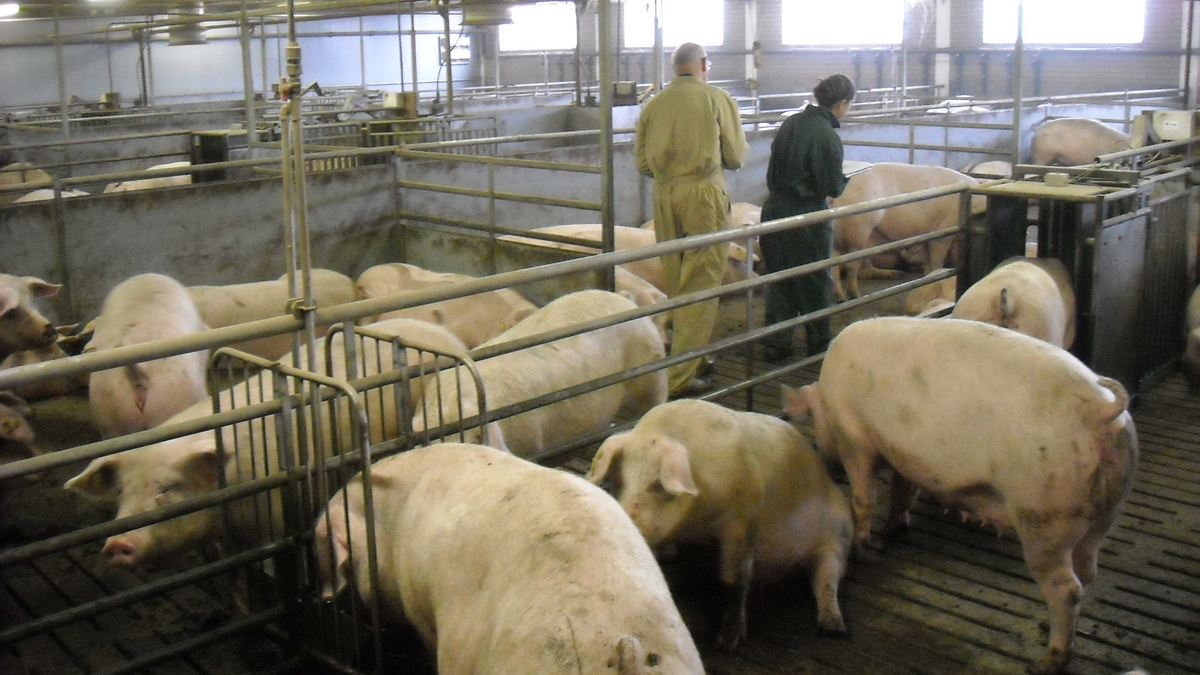Having an eye for what pigs need and acting quickly on what is observed are vital for pig welfare

Subject
Husbandry, tail biting, housing
The meeting was organized on 2-3 December 2020. In total, 8 delegates - inspectors of Competent Authorities and pig welfare policy workers - from Sweden, Finland, Denmark, Estonia, Latvia, Lithuania, and on specific request Austria, participated. Furthermore, the meeting was attended by two delegates from DG SANTE and nine staff members of EURCAW-Pigs.
Three welfare topics were discussed in detail on day 1 and wrapped up by an invited expert on day 2: tail biting, farrowing housing and management, and sow group housing and mixing. Two ‘intermezzos’ were provided by EURCAW-Pigs team members: on the EURCAW-Pigs website and on demonstrators.
Tail biting
Tail biting and how to control it is one of the major issues in pig farming, and several of the risk factors were addressed. Anything that disturbs pigs might add to the problem of tail biting, thereby making it a multifactorial problem. It is vital that farmers invest in spending time in the barn, making it a routine, to understand and develop an eye for what pigs need and to act quickly on what is observed. The definition of an intact and healthy pig tail and methods to record it was also addressed. For scoring of tail damage on farm, EURCAW-Pigs adopted a scoring method based on discussions in the Subgroup Pigs of the EU Platform on Animal Welfare. For scoring of tail lesions at the abattoir, no routinely usable scheme/method is available yet. Automatic scoring of docked versus undocked tails could be a good solution to see any progress over time. Tail biting - Antonia Patt, animal welfare scientist, Friedrich Loeffler Institut (FLI), Germany
Farrowing housing and management
Two main issues with regard to farrowing housing and management were addressed:
- Large litter size are an increasing welfare problem: Genetic selection for large litters is an ongoing process aiming to increase the number of weaned piglets. As a consequence, litter size often outnumbers functional teats. How can sufficient food be ensured for all piglets? Strategies do deal with large litters include the use of nurse sows, rescue decks, and provision of milk supplements in drinking cups outside or inside the farrowing pen. However, these strategies do not provide perfect solutions, and it was recommended to keep an eye on the indicators.
- Change to pens for loose sows as a solution to space limitations in crates: Problems with small crate size may be large and challenge sow welfare; older sows are particularly at risk due to their larger size. Pens for loose-housed sows provide them with more space, freedom to move and with the opportunity to nest build and to perform behavioural thermoregulation. In several Nordic Member States, loose housing for sows is either obligatory or promoted; this means there is a tendency to move away from crates.
Farrowing housing and management – Lene Juul Pedersen, Professor in Animal Welfare and precision livestock farming, Aarhus University, Denmark
Sow group housing and mixing
Aspects being discussed and known to contribute to optimization of the group housing system and management include:
- Sufficient free space for sows to pass each other: e.g. in systems with feeding stalls where it is aimed to have a good ratio between stall width and space between rows, or between row and wall.
- Mixing without problems: consequences of aggression can be minimized by 4-5 m² space, dry and good quality floor to prevent slipping, falling and lameness. Preferably, sows are kept in static groups.
- A feeding system in which a sow can eat safely: this is necessary to provide every sow with her nutritional needs. Ideally, competition around feeding is prevented, e.g. by locking doors of Free Access Stalls. Individual feeding or sorting options are preferred.
- Provision of roughage in the trough, on the floor or from a rack results in increased satiety and much more quiet sows. Offering both fibrous ingredients in the diet and ad libitum access to roughage is most effective.
- Working in an accurate, consequent and structured way is crucial in all systems.
Sow group housing and mixing – Herman Vermeer, pig welfare scientist, Wageningen Livestock Research, The Netherlands
